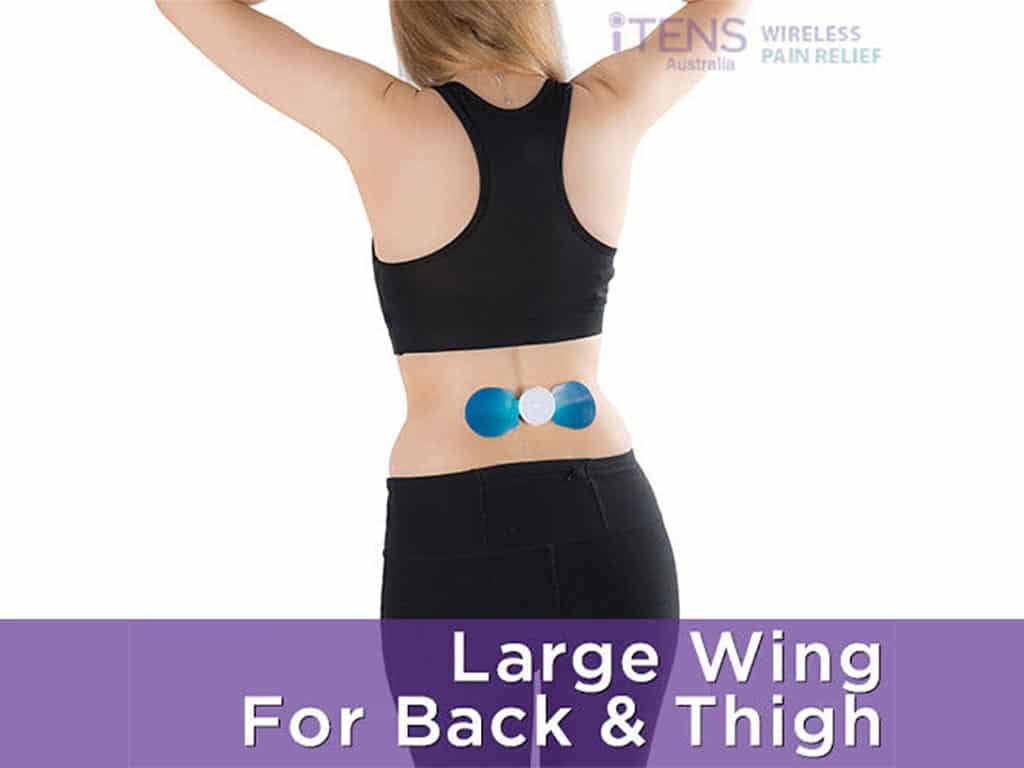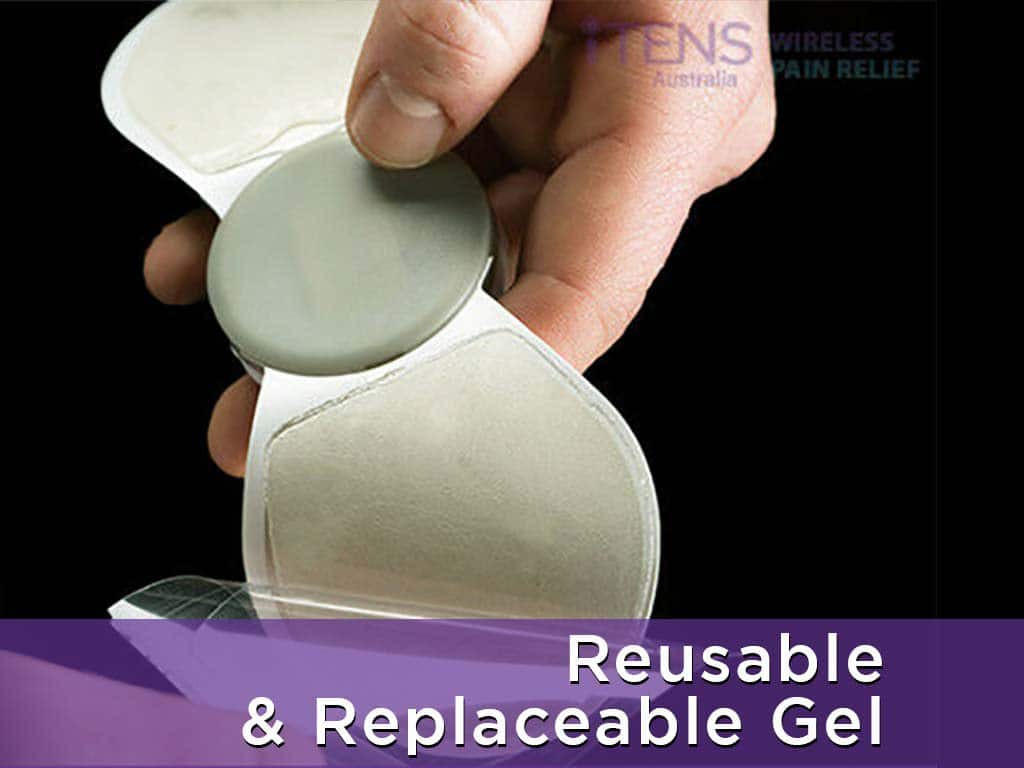
A TENS unit on spine for back pain is one of the common uses of Transcutaneous Electrical Nerve Stimulation (TENS). It is a therapy device that delivers low-voltage electrical currents to reduce various types of pain. However, it necessitates specific pad placement for safe and effective use. The ideal arrangement is to position the pads on both sides of the spinal column. It is vital not to place the patches directly on the spine to avoid discomfort.
Many health conditions affect the back. A common ailment is cervical radiculopathy, which is the compression of the nerve roots on the neck. Others include degenerative disc disorders, sciatica, and fibromyalgia, which contribute to chronic back pain. Many people with chronic conditions use a TENS unit to manage the symptoms. This article will guide users on how it works, its proper pad placement in the back, as well as how to operate the device effectively.
How a TENS Unit on Spine Works for Pain Relief
TENS units on spine work by sending electrical impulses through the skin and into the nerves. Firstly, the currents stimulate the nerve endings in the area, interrupting the transmission of pain signals to the brain. This is based on the Gate Control Theory of Pain, wherein certain nerve fibres in the spinal cord control the passage of pain signals.
Secondly, a TENS machine produces mild pulses to trigger the release of natural painkillers, which are endorphins. These are hormones that help suppress pain by inhibiting the nerve cells that send chemical messages to the brain. In addition, endorphins help reduce stress and anxiety. As a result, it contributes to the significant reduction of pain and enhances the sense of well-being.
Lastly, TENS units boost blood circulation, increasing the blood and oxygen flow to the affected area. This helps to reduce swelling and inflammation and relax sore muscles. Through varying frequency levels, TENS therapy can achieve these effects. Overall, electrical nerve stimulation distracts the brain from sensing pain and allows it to focus on other sensations instead.
Benefits of Using the Device
- The device is suitable for managing acute and chronic pain conditions.
- TENS can help relieve acute pain like muscle spasms and muscle strains.
- TENS can help relieve osteoarthritic pain, chronic musculoskeletal pain, peripheral neuropathy, and spinal cord injury.
- A TENS unit has adjustable settings that can help with mild to severe symptoms.
- TENS provides targeted pain relief through electrode pad placement.
- The device is non-invasive and portable. It can be used at any time, whenever necessary.
- Using the device for chronic pain relief helps reduce the intake of medications.
- It is a non-surgical pain treatment option for spine pain.

Guidelines for Proper Pad Placement When Using a TENS Unit on Spine
Proper pad placement when using a TENS unit on spine is crucial to ensure optimal results. For maximum effectiveness, first, identify the source of pain. It could be the lower back, upper back, or neck region. Next is to choose the appropriate pad size suitable for the affected area.
For back pain, position the pads approximately one inch on the side of the spinal column in line with the area of pain. It is vital to avoid direct electrode placement on the spinal cord to avoid potential discomfort. This placement may also reduce the effectiveness of TENS treatment, as it may not close the “neural gates” properly.
For neck and shoulder pain, place the TENS pads on the base of the neck or around the shoulder joints. Additionally, ensure the pads are symmetrically aligned to distribute the electrical stimulation evenly. When using two or more pads, position them one to two inches apart for better coverage. Also, never overlap the pads.
Other Sensitive Areas to Avoid
Other places to avoid unit placement are the eyes, face, throat, and head. These regions contain sensitive nerves and tissues that may cause unpleasant sensations due to electrical currents. Moreover, keep the electrodes away from the chest area. This may trigger seizures or abnormal heart rhythms, especially for people with heart diseases.
Furthermore, do not put the electrodes directly over bony prominences and joints, like the elbow, ankles, and kneecaps. Otherwise, the electrical pulses may cause discomfort. Also, since the joints are flexible, movements during the therapy may cause the pads to come off. Lastly, do not place the pads over the abdomen during pregnancy.

How to Operate a TENS Unit on Spine
Before using a TENS unit on spine, make sure that the skin is clean and free from dirt, sweat, oil, or lotion. Next, stick the electrode pads on the target area and turn on the machine. Individuals can set the pulse rate (frequency), pulse duration, and waveforms. Alternatively, some devices have pre-set programs with fixed settings for specific ailments or body parts.
Start with the lowest intensity and gradually increase the level until it gives sufficient and comfortable sensations. Starting low is essential to allow the body to get accustomed to the electrical pulses. Subsequently, set the treatment time for at least 15 to 30 minutes. The duration of the therapy will depend on the type of pain, such as acute and chronic pain.
During the session, monitor the response of the body and adjust the settings if necessary. It is recommended to try different stimulation modes to find the most effective results. After the treatment, turn off the device and remove the electrodes. Clean the adhesive surface of the pads and store the TENS unit properly.
Safety Precautions When Using the Device
Following the safety precautions is important to ensure effectiveness and prevent potential harm. Firstly, people with serious medical conditions should consult a health professional before use. Secondly, keep the stimulation within the recommended frequency levels. Turning it too high may cause potential skin irritation or burns.
Thirdly, ensure that the skin surface is not broken, infected, or irritated to avoid uncomfortable sensations. Additionally, always inspect the device before use. Check the unit for possible open wires and new batteries. The electrode patches should adhere properly to the skin. Lastly, do not use the TENS machine in water or while sleeping or driving.
Conclusion
Using TENS units on spine is one way to relieve back pain conditions. It is a portable, battery-operated device that delivers mild electrical shocks to the skin. This process stimulates the affected nerves and causes them to block pain signals and release endorphins. As a result, it provides relief of pain sensations without the need for pain medicines. Moreover, TENS therapy is safe to use and does not have adverse side effects.
Nevertheless, it is vital to follow the pad placement guide for safe and effective use. For spine pain, position the pads on either side of the spinal column. In line with this, avoid sensitive areas such as the bony regions, joints, throat, and head. Furthermore, always start the treatment at the lowest intensity level and increase gradually. Finally, consult a specialist before using TENS, especially for people with heart conditions, epilepsy, and pregnant women.







